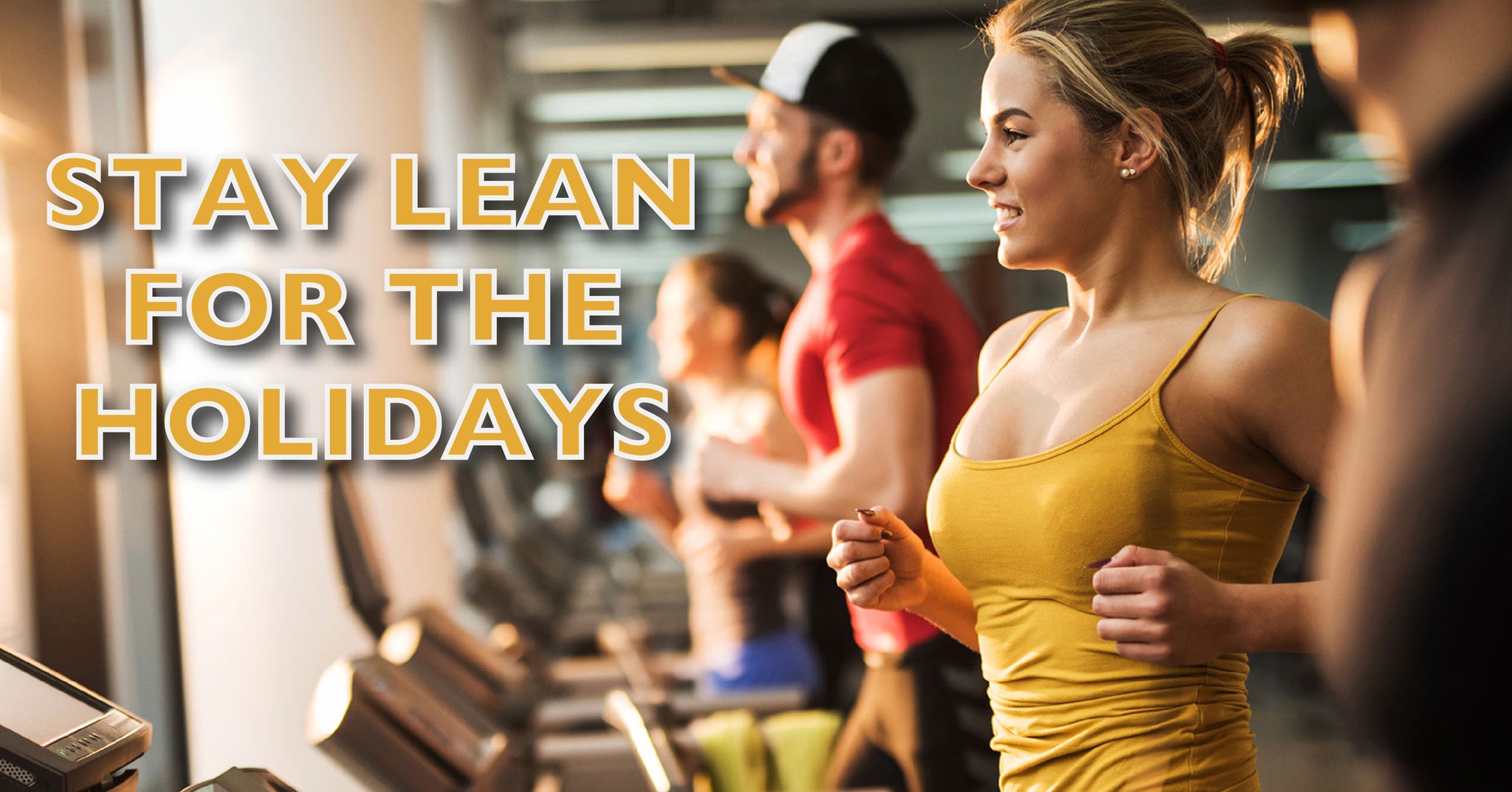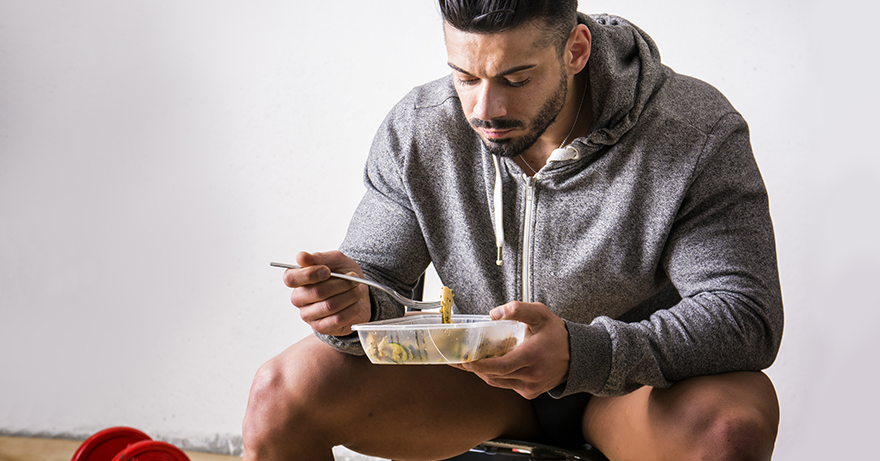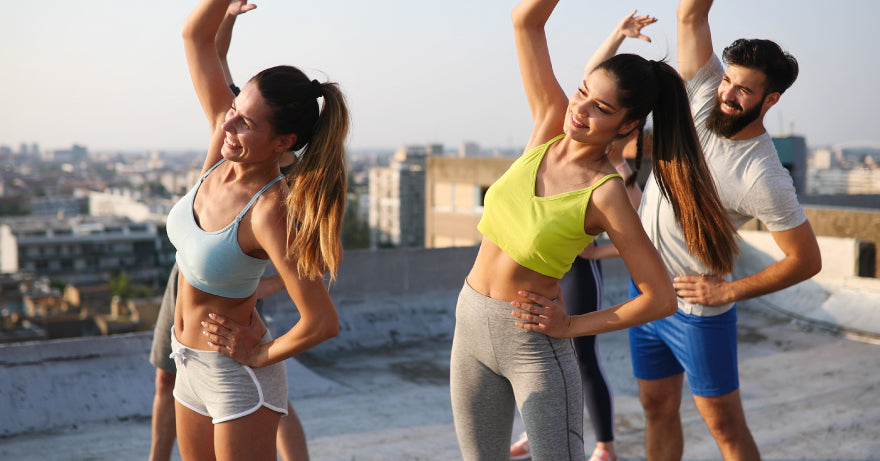Here's How Much Cardio You Need to Stay Lean This Holiday Season

Three Types of Cardio
There are three main types of cardio that you can do. They are steady-state, medium-intensity, and HIIT. Let's take a closer look at each of these exercises.
Steady State
This is the traditional type of cardio that most people think of when they hear the words “cardiovascular exercise.” When you do steady-state cardio, you get your heart rate up and keep it there for an extended period of time. Walking, jogging, swimming, and cycling are all examples of this. This type of exercise doesn't need to be super intense and only involves one type of activity.
Medium-Intensity
Medium-intensity cardio is basically interval training. This is when you go hard for a shorter period, like 30 – 45 seconds, and then actively recover with a gentler activity like walking or light jogging. The goal is to mostly recover during the rest period, so that you can push through the more intense period of exercise. You can combine this type of exercise with bodyweight workouts for an efficient, shorter workout. This type of training, along with HIIT, also increases the number of calories you burn after you work out. While it’s only a moderate increase, it’s still more than what you burn after doing steady-state cardio!
HIIT
HIIT stands for high-intensity interval training. This is when you go all out for very short periods before taking a break. These workouts should only last 15 – 25 minutes at a time because they should be very intense. These intense workouts should be things like sprinting or doing a strenuous exercise (like burpees or rope ground pounds) as quickly and intensely as possible. You then recover as much as possible before another short burst of intensity.
How to Stay Lean During the Holidays
The key to staying lean during the holiday season is to do more than just cardio! You should definitely incorporate the three types of cardio exercise in your schedule. But, you also want to strength train and watch what you eat. This doesn't mean you can't indulge in some treats with family and friends, but it does mean you should be conscious of what you are consuming. If you stick with healthy choices and smart portions, you'll be able to minimize the impact of holiday treats.
Why is Diet so Important?
Many of us think that we can do cardio to offset the amount of food that we eat during the holidays. The problem is that cardio doesn't burn quite as many calories as we think. For example, a 185-pound person who runs an 8-minute mile can burn 555 calories by running for 30 minutes. Unfortunately, many of us can't run that fast, and if you weigh less than that, you burn fewer calories. Plus, if you eat a healthy, well-balanced meal afterward, chances are high that your meal will be around 600 calories. This means you've replaced all of the calories you just burned while running!
This is why diet is so crucial to weight loss. You must cut calories to lose weight and create a caloric deficit. The good news is that you can increase the number of calories you burn by also doing strength training. Building muscle boosts your metabolism. And, the more muscle you have, the more calories you burn – even when at rest! This means you can eat a little bit more while still creating the all-important caloric deficit needed for weight loss and a lean body. So, lifting weights and a proper diet will make a much more significant difference in how you look, than doing cardio seven days a week.
You Should Still Do Cardio!
This isn't to say that you shouldn't do cardio. It's great for your health, burns fat, and is also an excellent way to stay active and improve your recovery time between weight lifting sessions. So, cardio is a crucial part of a healthy lifestyle, but it shouldn’t be the only thing you do!
In order to get the most out of your cardio sessions, you should aim to do all three types of cardio at least once a week. This means you can do a more extended, steady-state session on the weekend and then do interval training, like HIIT or medium-intensity exercise, during the week. Ideally, you should try to do HIIT sessions 1- 2 times a week since it is so intense. You can then do medium-intensity session 2 - 3 times per week since it is less difficult. Since steady-state cardio is less intense and easier on your body, you can perform it 1 – 3 times per week.
The holiday season is a tough time to lose weight. However, you can make it through and still be lean! The key is to watch what you eat when not with friends and family and maintain a consistent exercise schedule. Combining the three types of cardio throughout the week will keep you from getting bored and help you burn more calories more quickly. And remember, doing something is better than nothing. If you can’t go as hard or as long as you planned, that is okay. Staying consistent is more important than anything else. Plus, every healthy choice you make means you’ll have a head start on your summer body!
Also in Featured Articles

Cross Training Improves Fitness and Reduces Injury
You may be in great shape, for the sort of exercise you do routinely. But if that's all you do, day after day, you may be setting yourself up for injury or mental burnout, and that is not a good way to get fit. What can help prevent injury and burnout? Cross training.

7 Nutrition Hacks for Elite Performance You’ve Never Tried Before
As athletes progress toward higher levels of competition and training, nutrition plays a much bigger role in their ability to perform and recover. Aside from simply receiving adequate caloric intake, there are other roles nutrition plays and systems that it influences.

Exercise helps inhibit cancer - Breakthrough study reveals how
Exercise affects almost all tissues in the body, and scientists have found that being physically active can reduce the risk of several types of cancer as well as improving outcomes for cancer patients.

